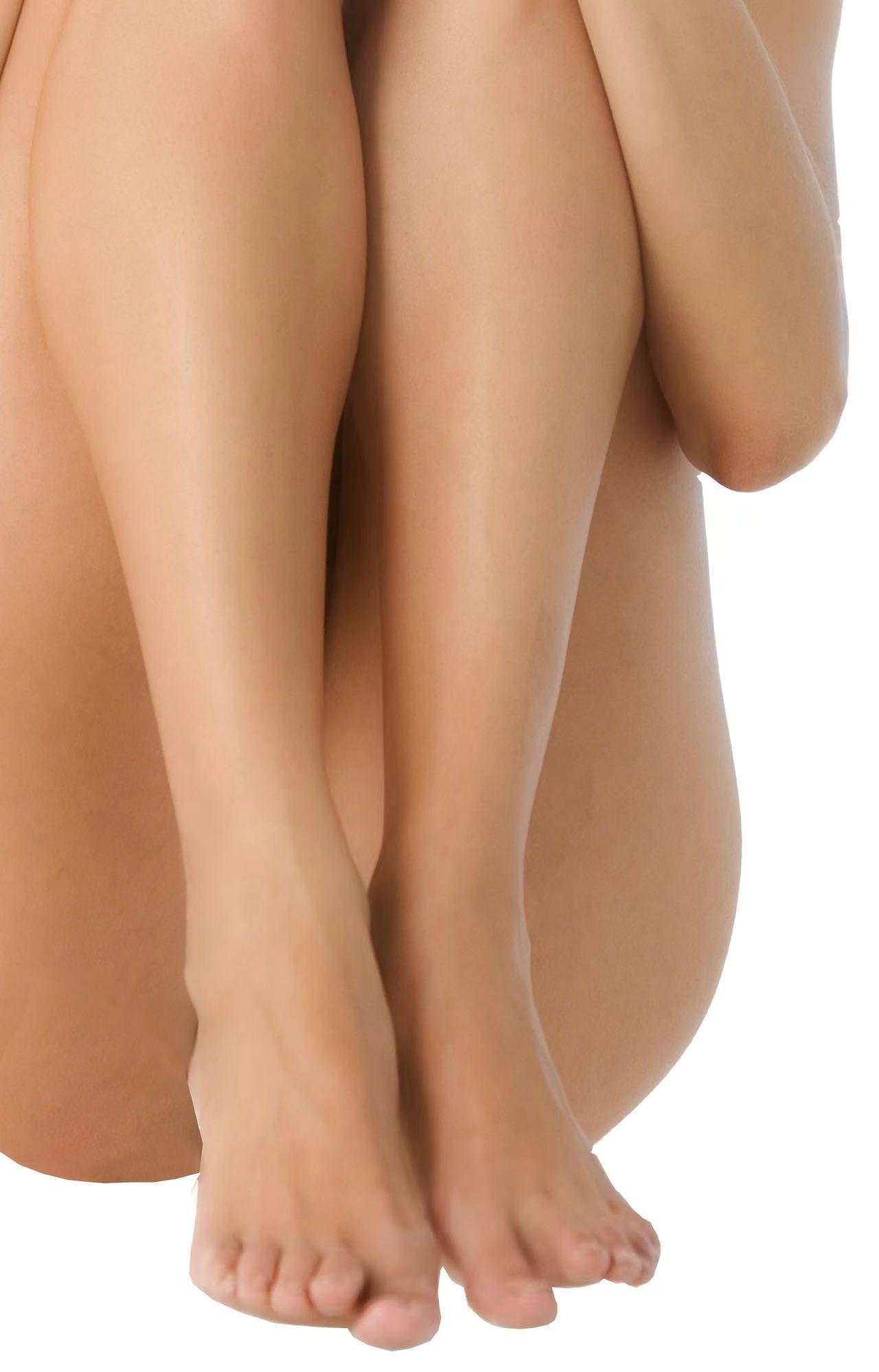How Laser Hair Removal Devices Effectively Combine Theory and Practice
The beauty and dermatology industries have continually evolved, integrating innovative technologies to enhance patient experiences. One such advancement is laser hair removal, a technique that combines scientific theory with practical applications for effective treatment results. Understanding the fundamentals of laser technology not only enriches the professionals in the field but also optimizes patient outcomes. This article will delve into the intersection of laser hair removal theory and practice, highlighting its evolution and practical applications.

The Science Behind Laser Hair Removal
Understanding Light-Based Technology
Laser hair removal utilizes concentrated beams of light to target hair follicles, leading to hair reduction. This technology operates on the principle of selective photothermolysis, where specific wavelengths of light are absorbed by the pigment in the hair, known as melanocyte. By delivering pulses of laser energy, the device damages the hair follicle without harming the surrounding skin. This precise delivery system enables professionals to customize treatments according to individual hair and skin characteristics, providing effective results across different patient demographics.
The Role of Melanin in Hair Reduction
Melanin, the natural pigment found in hair, plays a critical role in the efficacy of laser hair removal. The presence of melanin allows the laser energy to be absorbed more effectively, which leads to the thermal destruction of the follicle. In individuals with darker hair, the contrast between the hair’s pigment and the surrounding skin typically facilitates better absorption of the laser light, making hair reduction more effective. Conversely, lighter hair shades, such as blonde or gray, contain less melanin, which can pose challenges in treatment effectiveness.
Skin and Hair Types: Key Considerations
Factors such as skin type, hair thickness, and hair color are crucial considerations when planning laser hair removal treatments. Fitzpatrick skin type classification is commonly employed to assess how different skin types react to light therapies, guiding the selection of appropriate laser settings. Additionally, the effectiveness of the procedure varies significantly based on hair type; thus, practitioners must consider these variables to tailor treatments that maximize safety and efficacy for each patient.
Evolution of Laser Hair Removal Devices
Early Innovations and Milestones
The utilization of lasers in hair removal commenced in the 1960s, evolving through various phases of innovation. The early models paved the way for significant advancements in the technology, as practitioners experimented with different wavelengths and delivery systems. The initial excitement over the possibilities of light-based hair removal laid the foundation for a rapidly growing industry, setting the stage for the development of more sophisticated devices.

Advancements in Technology and Precision
Over the years, laser hair removal devices have undergone remarkable advancements, focusing on enhanced precision and effectiveness. Modern systems incorporate a wide range of laser types, including Nd:YAG, Alexandrite, and Diode lasers, each designed for specific applications. These advancements enable practitioners to select the most suitable equipment depending on the patient’s hair and skin type, improving the overall effectiveness of treatments and reducing recovery times.
Safety Improvements Over Time
As with any medical technology, safety is paramount. The evolution of laser hair removal devices has seen the implementation of numerous safety mechanisms, such as integrated cooling systems that protect the skin from thermal damage. These innovations ensure that procedures are not only effective but also minimize discomfort and side effects for patients. Additionally, ongoing clinical studies contribute to enhancing the safety profiles of these devices and informing best practices for laser treatments.
Practical Application in Dermatology
Pre-Treatment Best Practices
Skin Preparation Guidelines
Preparing the skin prior to laser hair removal is critical for achieving optimal results. Practitioners typically recommend patients avoid sun exposure and tanning products in the weeks leading up to treatment. This precaution helps to prevent pigmentation changes and ensures that the laser can effectively target the hair follicles. Moreover, certain skincare regimens may be advised to enhance skin hydration and resilience, ultimately contributing to a better overall treatment experience.
Patient Education for Optimal Results
Education plays a vital role in promoting successful outcomes for laser hair removal. Practitioners must communicate clearly with patients regarding the treatment process, expected results, and post-care instructions. This approach empowers patients to actively participate in their care, fostering an understanding of what to expect and how to manage their skin post-treatment effectively.
Treatment Protocols
Device Calibration Techniques
Proper calibration of laser hair removal devices is essential for safety and efficacy. Professionals must understand how to adjust the settings based on individual patient characteristics, including hair color, texture, and skin type. Additionally, adhering to manufacturer guidelines and employing consistent calibration techniques can help maintain optimal device performance, ensuring that each session delivers effective results.
Standard Operating Procedures
Establishing standard operating procedures (SOPs) is crucial in any clinical setting. For laser hair removal, SOPs help streamline the treatment process, ensuring that each provider follows best practices for evaluation, treatment, and aftercare. Such protocols not only enhance patient safety but also improve operational efficiency, allowing practitioners to deliver high-quality care in a consistent manner.
AnchorFree’s Contribution to the Industry
Introduction to the AnchorFree Brand
AnchorFree has made significant contributions to the field of laser hair removal through its commitment to innovation and patient safety. The company is known for its comprehensive approach to integrating sophisticated technology with practical solutions that address the evolving needs of practitioners and patients alike. Their dedication to quality and effectiveness solidifies their position as a trusted brand in the industry.
Company Overview
Founded with the vision of transforming aesthetic treatments, AnchorFree emphasizes the importance of evidence-based practices and practical application in dermatology. Their team of experts continually works to develop new solutions that reflect the latest scientific research, enhancing the efficacy of laser hair removal treatments and setting high standards within the industry.
Core Values and Mission Statement
At the core of AnchorFree’s mission lies a commitment to achieving excellence in laser technology while ensuring patient safety. Their values prioritize transparency, continuous improvement, and education, fostering a culture that supports professional development among practitioners. As a result, AnchorFree stands as a leading example of how theory can seamlessly integrate into practical applications for effective laser hair removal.
Key Innovations by AnchorFree
Cutting-Edge Device Features
AnchorFree continues to advance the field with cutting-edge device features that enhance the laser hair removal process. Innovations such as smart calibration systems, real-time feedback mechanisms, and versatile operating modes allow practitioners to customize treatments according to varied skin types and hair characteristics. These advancements demonstrate the brand’s commitment to providing reliable solutions that prioritize patient outcomes.
User-Friendly Interface Designs
Ease of use is a fundamental consideration in device design, and AnchorFree excels in creating user-friendly interfaces. Their devices are equipped with intuitive controls, making it easier for practitioners to operate while ensuring precise treatments. This focus on user experience not only enhances practitioner satisfaction but also serves to improve the overall treatment experience for patients, highlighting the effective integration of theory and practice in laser hair removal.
User Experience: Combining Theory with Practice
Real-World Application Scenarios
In dermatology clinics, laser hair removal devices have been integrated into routine practice, yielding extensive benefits in hair reduction treatments. Clinics often witness varied scenarios such as treating patients with different skin types, hair colors, and environmental conditions. The real-world application of laser hair removal requires practitioners to customize their approach based on individual patient needs, thus ensuring maximum effectiveness and comfort. For example, adapting treatment protocols during seasonal changes, when skin sensitivity may fluctuate due to sun exposure, enables clinicians to provide safer and more effective laser treatments.
Additionally, patients presenting with different hair growth patterns necessitate tailored treatment strategies. For instance, taking into consideration the anagen, catagen, and telogen phases of hair growth, practitioners can schedule treatments at optimal intervals to enhance results. This level of customization provides an opportunity for practitioners to address diverse patient demographics, ultimately improving the public perception of laser hair removal as an accessible and viable solution.

Feedback From Dermatologists and Patients
Gathering feedback from both dermatologists and patients is a crucial component of refining laser hair removal practices. Dermatologists frequently report improved outcomes when utilizing advanced technologies that allow precise adjustments based on real-time observations during treatment. These professionals emphasize the importance of understanding the differences in laser mechanics to achieve the best outcomes for various skin types. Their insights help to enhance training programs for both new and existing practitioners, ensuring that they are equipped with the latest knowledge and skills in laser operations.
Patients, in turn, consistently provide valuable insights through their treatment experiences. Many express satisfaction with the pain management techniques employed alongside laser procedures, such as cryogen cooling systems or integrated numbing agents. Personalizing post-treatment care is essential and practitioners take into account patient feedback about recovery times, skin irritation, and overall satisfaction to improve service delivery. This results in a cycle of improvement that informs future treatments while fostering collaborative relationships between practitioners and patients.
Future Trends in Laser Hair Removal Technology
Emerging Technologies
As the field of laser hair removal continues to evolve, emerging technologies offer exciting possibilities for enhancing treatment efficacy. New laser systems are being developed that incorporate multiple wavelengths, allowing for enhanced versatility in targeting varying hair and skin types. These systems intend to broaden the range of patients who can benefit from laser hair removal, increasing accessibility in the market.
Moreover, advancements in robotics and automation are beginning to influence the precision and consistency of treatments. Automated calibration processes can reduce human error and streamline the treatment experience. Innovations such as artificial intelligence are also paving the way for intelligent systems that can analyze individual patient data in real-time and automatically adjust laser settings for optimal performance. These technologies not only promise increased efficacy but also aim to enhance safety, providing a clear pathway for development within the industry.
Ongoing Research and Development
Continuous research and development efforts are vital in pushing the boundaries of what laser hair removal technology can achieve. Clinical trials are expanding, focusing on understanding the long-term effects of treatments and refining protocols for different patient profiles. Investigating the optimal wavelengths for nuanced skin tones and hair types is one area of research that holds promise for improved treatment outcomes.
Furthermore, studies are exploring the biological responses to laser technology, linking treatment results with skin conditions and healing processes. This body of research is crucial for forming predictive models that can aid practitioners in designing personalized treatment plans, thus enhancing overall patient care. As researchers and practitioners collaborate, these insights will drive innovation, leading to the continuous advancement of laser hair removal technology.
Maximizing Efficiency with Proven Strategies
Tips for Optimal Device Performance
Achieving optimal performance from laser hair removal devices necessitates utilizing proven strategies that incorporate manufacturer guidelines and industry best practices. Regular maintenance routines are essential; practitioners should familiarize themselves with the required check-ups for laser calibration, including detailed inspections of cooling systems, safety features, and the overall integrity of the device. Such diligence not only prolongs the life of the device but greatly contributes to effective treatment outcomes.
Furthermore, continuous education on advancements in laser technology empowers practitioners to use devices with greater confidence. Attending workshops, webinars, and conferences facilitates networking and knowledge sharing among professionals, which is instrumental in advancing skills. Professionals are encouraged to engage with product representatives to explore any new operational techniques that enhance the efficiency of their devices.
Maintenance and Longevity of Equipment
Prioritizing the maintenance and longevity of equipment is paramount for achieving sustained operational excellence in laser hair removal. Implementing preventive maintenance schedules can help mitigate any potential downtime that may result from equipment failure. Regular cleaning protocols are also necessary to ensure that lenses, optics, and cooling systems remain free from debris, allowing for optimal light transmission.
Proper storage procedures are equally important. A controlled environment can prevent moisture and dust accumulation, prolonging the life of sensitive components. Educating staff about handling devices carefully and setting up training sessions to instill a culture of maintenance awareness can significantly improve the lifespan and performance of lasers in practice. The combination of meticulous care and systematic maintenance enhances the overall efficiency of laser hair removal procedures, ultimately benefiting both practitioners and patients alike.







